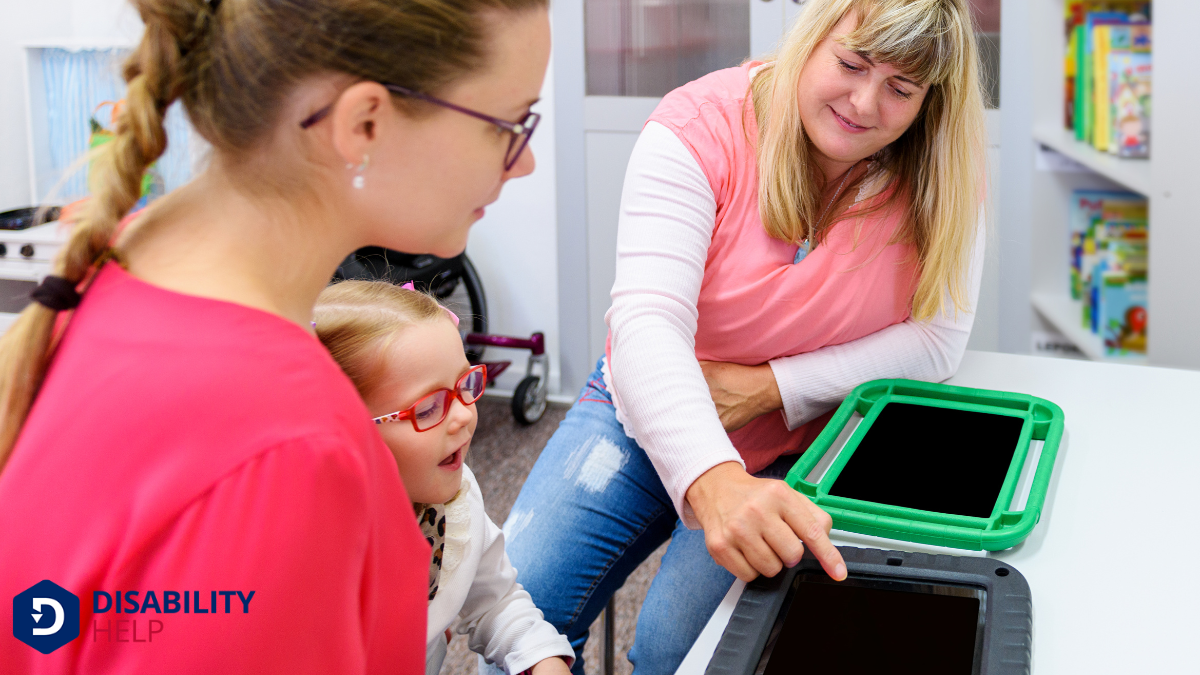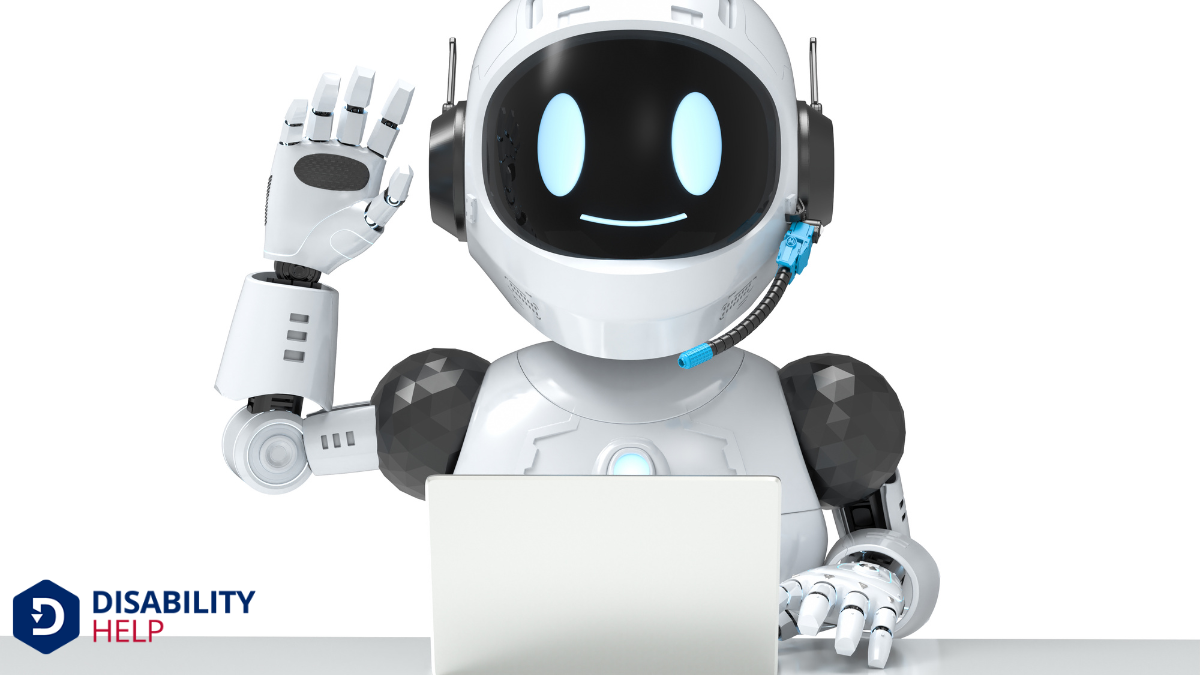Let's explore assistive technologies for communication, which are essential tools for individuals facing speech or language challenges. These technologies, from speech-generating devices to eye-tracking systems and AAC tools, offer diverse ways to express thoughts and emotions. They don't just bridge communication gaps; they enhance quality of life by enabling fuller social interactions. So, how exactly do these tools work, and what role does artificial intelligence play in their development?
Key Takeaways
- Assistive communication devices provide alternative ways for individuals with speech or language impairments to express themselves.
- Speech-generating technologies convert text into spoken words, enhancing independence and social interaction.
- Eye-tracking communication systems allow users to communicate using eye movements to select words or commands.
- Augmentative and Alternative Communication (AAC) tools include both low-tech picture boards and high-tech voice output devices.
- Artificial intelligence enhances communication effectiveness through speech recognition, personalization, and predictive text features.
Understanding Assistive Communication Devices
When we immerse ourselves in the world of assistive communication devices, it's essential to grasp their pivotal role in bridging communication gaps for individuals with speech or language impairments. These devices empower users by providing them with alternative ways to express themselves, ensuring their voices are heard.
We can't overlook the importance of understanding these tools and how they cater to diverse needs.
Assistive communication devices come in various forms, from simple picture boards to advanced electronic systems. Each device is tailored to an individual's specific needs and capabilities.
Speech-Generating Technologies

Having explored the diverse range of assistive communication devices, we now turn our attention to speech-generating technologies that are transforming the communication landscape.
These tools empower individuals who've challenges with verbal communication by converting text into spoken words. We can select from a variety of devices tailored to different needs, whether through handheld gadgets, tablet-based apps, or dedicated machines.
These technologies often offer customizable voice options, ensuring a personal touch that respects individual identity.
It's essential to understand how these devices enhance independence, allowing users to express themselves in real-time conversations.
Speech-generating technologies provide more than just a voice; they open doors to social interactions and improved quality of life.
Together, let's embrace these innovations and support those who rely on them.
Eye-Tracking Communication Systems
Eye-tracking communication systems are a remarkable leap forward in assistive technology. They allow individuals with limited mobility to communicate using only their eyes. By tracking eye movements, these systems enable users to select words or commands on a screen. This can be life-changing for those who can’t rely on traditional methods of communication.
We can imagine the empowermentThe process of gaining control, authority, and power over one’s life, often used in the context of... this brings to individuals who’ve faced significant communication barriers.
These systems are intuitive and user-friendly. They work by detecting where a person looks, translating it into actionable input. It’s fascinating how technology can interpret eye movements to form words and sentences.
As we embrace these advancements, we’re opening up new avenues for independence and expression, ensuring everyone has a voice.
Augmentative and Alternative Communication (AAC) Tools
As we explore Augmentative and Alternative Communication (AAC) tools, we'll look at their different types and the benefits they offer to individuals who face communication challenges.
These tools range from low-tech options like picture boards to high-tech devices with voice output.
Together, we'll learn how to choose the most appropriate AAC solution to enhance communication for those in need.
Types of AAC Tools
In the domain of communication, Augmentative and Alternative Communication (AAC) tools offer diverse solutions for individuals with speech or language impairments.
These tools help us bridge communication gaps, enhancing our ability to connect with one another.
Let's explore the various types of AAC tools that can assist us:
- Symbol-based systems: These include picture boards and communication books using symbols or images to convey messages.
- Speech-generating devices (SGDs): Electronic devices that produce spoken words, allowing users to express themselves verbally.
- Text-based systems: For users who can read and write, these tools convert typed text into speech.
- Gesture-based systems: Utilizing gestures or sign language, these tools facilitate communication through physical movements.
Benefits of AAC
While communication can be challenging for some, AAC tools bring a multitude of benefits to the table. They empower individuals to express thoughts, needs, and emotions, fostering deeper connections and improving relationships.
With AAC, we can guarantee everyone has a voice, promoting inclusivity and reducing feelings of isolation. These tools also enhance independence, allowing individuals to participate more fully in daily activities and decision-making processes.
Moreover, AAC can boost confidence, encouraging users to interact with others and engage in social settings. This increased interaction often leads to improved cognitive development and learning opportunities.
Choosing Appropriate AAC
Selecting the right AAC tools is essential for maximizing the benefits we’ve explored. When choosing these tools, we should consider several key factors. First, we need to understand the user’s specific communication needs and preferences. This will guide us in selecting tools that are both effective and user-friendly.
Let’s also remember that flexibility is important, as needs may change over time.
- User’s communication abilities: Evaluating the individual’s current abilities helps tailor the tool.
- Environment compatibility: Consider where and how the AAC will be used daily.
- Ease of use: Confirm the tool is intuitive for both the user and their supporters.
- Technical support and updates: Regular updates and accessible support can enhance usability.
The Role of Artificial Intelligence in Assistive Communication

Let's explore how artificial intelligence is revolutionizing assistive communication.
With AI, we're seeing significant improvements in speech recognition, making it easier for individuals to communicate effectively.
Additionally, advancements in predictive text and personalized communication solutions are transforming how we connect and express ourselves.
Enhancing Speech Recognition
As we explore the intersection of technology and communication, it’s fascinating to see how artificial intelligence is revolutionizing speech recognition in assistive devices.
AI-driven speech recognition enhances our ability to communicate by understanding and processing spoken language with remarkable accuracy. These advancements open up new possibilities for those with speech impairments, making communication more natural and accessible.
Consider these exciting developments:
- Improved Accuracy: AI algorithms continuously learn and adaptA grassroots disability rights organization in the U.S. that focuses on promoting community-based se..., leading to more precise recognition of diverse speech patterns.
- Real-Time Processing: Fast processing speeds allow for immediate translation of speech into text, fostering seamless conversations.
- Noise Reduction: AI effectively filters out background noise, ensuring clear communication even in bustling environments.
- Multilingual Support: Recognition systems can handle multiple languages, catering to a global audience.
Together, these advancements foster inclusivity and empower individuals worldwide.
Predictive Text Advancements
While AI continues to transform our communication landscape, its role in predictive text advancements is particularly significant.
We've seen how AI algorithms can learn from our typing habits, suggesting words and phrases that save time and reduce effort. These advancements are especially beneficial for individuals with communication challenges. By predicting our intended words, AI not only speeds up communication but also reduces the cognitive load on users.
Predictive text tools have become more intuitive, understanding context and user-specific language patterns. They adapt to our unique communication styles, making digital interactions smoother.
As we embrace these innovations, we should appreciate how AI assists in bridging communication gaps, enabling more people to express themselves effectively and efficiently.
Let's continue to explore these possibilities together.
Personalized Communication Solutions
Building on the improvements in predictive text, we now explore how personalized communication solutions harness AI to transform assistive communication.
We’ve seen AI learn from individual preferences and patterns, tailoring solutions to fit unique needs. This approach not only boosts efficiency but also empowers users by giving them a voice that feels truly theirs.
Here’s how AI makes a difference:
- Customization: AI learns and adapts to our communication style, ensuring responses are relevant and personal.
- Speed: By predicting phrases based on past usage, AI accelerates the communication process.
- AccessibilityThe design of products, devices, services, or environments to be usable by people with disabilities....: AI breaks down barriers, making communication more inclusive for those with diverse abilities.
- Natural Interaction: It enables more fluid and human-like interactions, bridging the gap between users and technology.
Our journey with AI in communication is just beginning.
The Impact of Assistive Technologies on Daily Life
When we consider the impact of assistive technologies on daily life, it's clear these tools have transformed how individuals communicate and interact with the world.
They've empowered those with speech or hearing challenges, enabling them to express their thoughts and needs more effectively.
For many of us, these technologies mean independence and inclusionThe practice of creating environments in which any individual or group can be and feel welcomed, res..., allowing full participation in social, educational, and professional settings.
Conclusion
In exploring assistive technologies for communication, we've seen how these tools transform lives by enabling effective expression for those with speech or language impairments. From speech-generating devices and eye-tracking systems to various AAC tools, these innovations bridge communication gaps. With the integration of artificial intelligence, they're becoming even more advanced and personalized. Let's embrace these technologies to foster inclusivity, enhance social interactions, and improve quality of life for everyone who relies on them.






